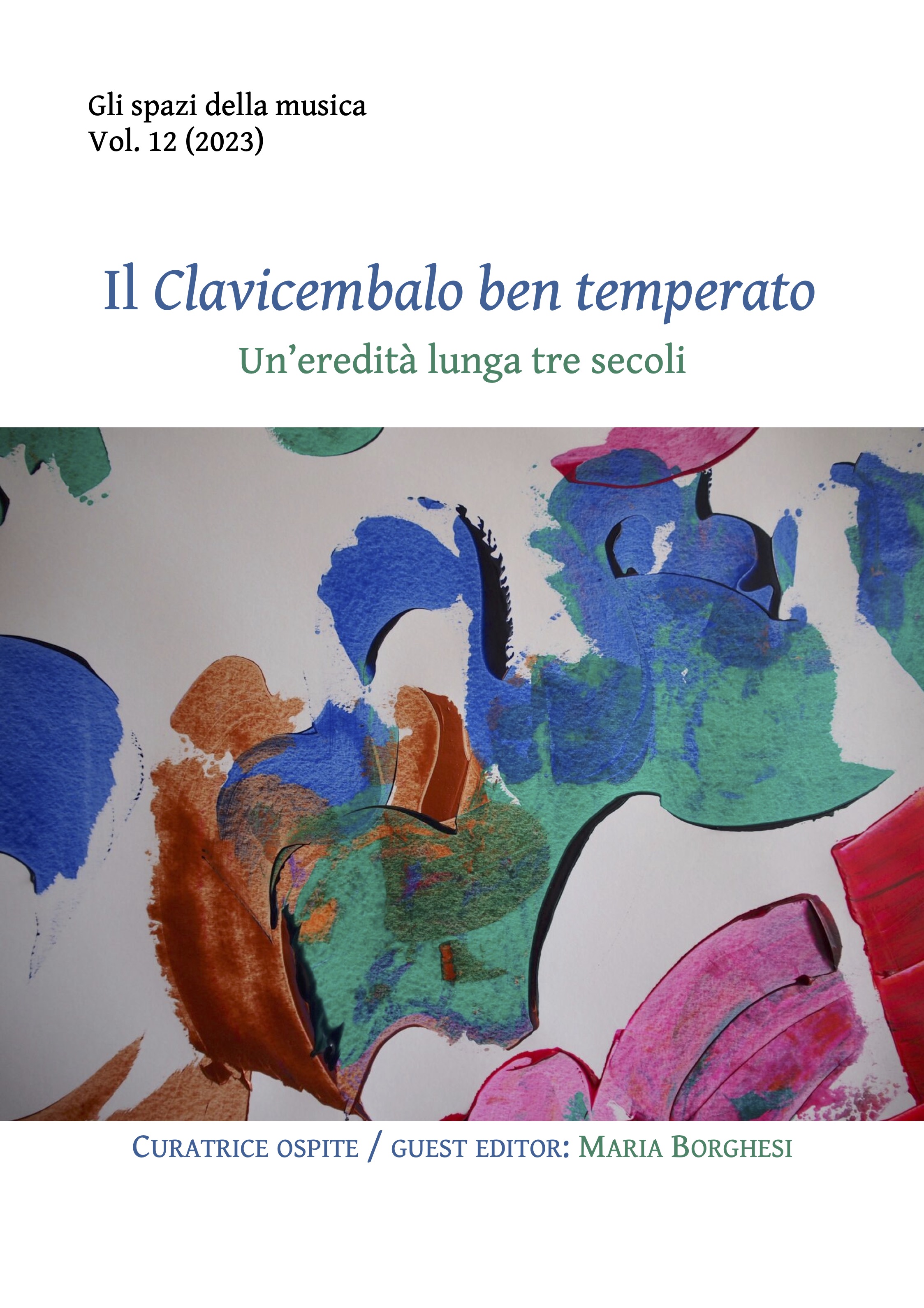«Eine solche Mannigfaltigkeit in den Schattierungen des Tons»
Ulteriori considerazioni su Johann Sebastian Bach e il clavicordo
Abstract
Johann Sebastian Bach’s predilection for the clavichord, reported to us by Forkel in a passage of his biography (the result of direct and epistolary acquaintance with Wilhelm Friedemann, as his pupil, and with Carl Philipp Emanuel) was challenged by Wanda Landowska in an attempt to make the Pleyel harpsichord named after her a new star in concert halls. Because of its intimate domestic nature, the clavichord could not lend itself to the solo recital ritual that would take over from Liszt’s time. The present contribution aims to restore the clavichord to its prominent role in the history of music of the Baroque era, mainly from the German area, by attempting to clarify the ambiguities related to the common use of the German word 'Clavier' to refer to the clavichord (the most widespread of all keyboard instruments) and to reflect on the destination of Bach’s keyboard works. The use of the clavichord (even with pedalboard) as the main instrument for the daily study and preparation of organists is witnessed from the 15th century until well into the 19th century. The frequent presence of clavichords in literature, didactic and domestic use naturally corresponded with a great constructive fervor that also involved Bach's relatives and pupils. With German-speaking emigrants to England Das wohltemperierte Clavier was long rendered in English as The Well Tempered Clavichord. Picking up the pioneering efforts of Pauer and Hipkins, Arnold Dolmetsch began making copies of clavichords in London in the last decade of the 19th century. Many sources advocating the use of the clavichord are examined, from Kuhnau to Walther, from Händel (who already in London advised against the use of the harpsichord and organ for beginners) to Mattheson. An interpretation given by the author of a passage involving two Italian chapel masters going to hear Bach on the clavichord further confirms Kantor's predilection for the most expressive of all keyboard instruments.
Downloads
Published
How to Cite
Issue
Section
License

This work is provided under the terms of the Creative Commons license Attribution - Noncommercial - No Derivative Works 3.0 Unported. The authors maintains all the the rights of the articles published in «Gli spazi della musica», included the publication rights.


